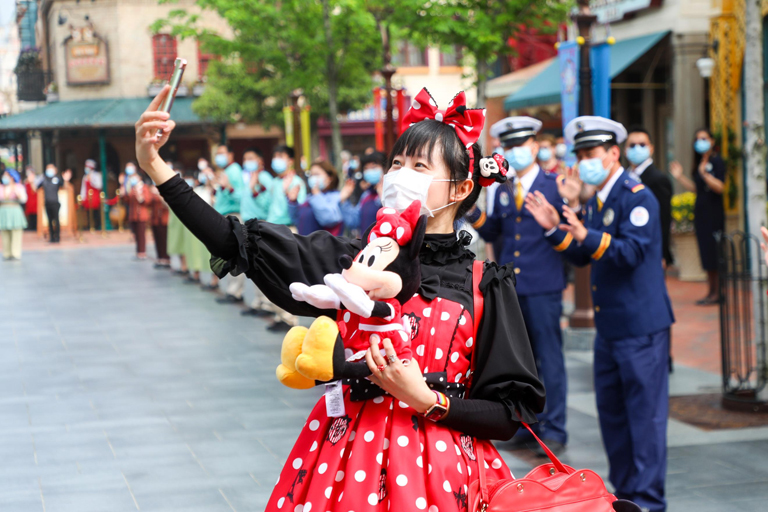
By Charly SHELTON
While America slowly reopens beaches, stores and restaurants in select communities amid a growing number of deaths and reported COVID-19 cases, China has slid down the backside of the curve and is continuing its phased reopening. With testing rates climbing and infections falling countrywide, the Chinese government has greenlit the reopening of Shanghai Disneyland, which has been closed for more than three months. It shuttered at the height of the pandemic in China on Jan. 25 along with Hong Kong Disneyland. Analysts suggest that each month the parks remain closed causes a loss of $1 billion for Disney, and new CEO Bob Chapek confirmed in the company’s second quarter earnings announcement that they were already $1 billion down due to the closures. That being said, Disney has been very forthright in keeping the safety of its guests as the deciding factor for when to reopen, not lost profits. While China is reopening now, America is a long way from being able to have a Disneyland again.
The newly reopened Shanghai Disneyland is somewhat of a blueprint for what to expect when the American parks are finally given the thumbs up to reopen. Social distancing markers line the ground to keep six feet between parties. Capacity is reduced to 30% – or 24,000 guests – in the park at one time. This is done through selective ticket sales and reservations online; no sales at the park gate. There are no fireworks at night and most live shows are canceled because the crowds of people in the amphitheater seats or standing on Main Street are too close together. There are no pictures with costumed characters. On rides, only one party is allowed per attraction vehicle to keep separation on all sides. Cast member sanitization procedures will be more frequent to disinfect the public surfaces. Temperature checks and health QR code scans will be done before reaching the main gate. Over 300 hand sanitizer stations are placed around the park at attraction entrances, exits and shops and scattered around. And for every guest and cast member, face coverings are required.
This is the biggest issue and the one thing that has been repeated more than any other protective measure both in the media and by officials. Face coverings have become culturally normalized in Asia and even before the pandemic tourists from Asian countries routinely wore face coverings in Disneyland or Walt Disney World. It’s just a way of life in their culture and what was seen as commonplace before is mandatory now. In America, it is not commonplace or even completely accepted. This was evident when venturing out to any grocery store or gas station in local areas. Even during the height of the pandemic it was not uncommon to see some patrons wearing a mask below their nose, around the bottom of their chins or not at all. Requiring guests to not only have on a high quality face mask when they enter but to then keep it on properly all day, except when eating, is a monumental task. America was born of rebellion and that rebellious spirit is still alive and well in some guests who may want to remove the mask to the detriment of others because they either don’t believe in its efficacy or don’t want to deal with its discomfort, especially in the hot California sun or the muggy Florida humidity. And without some kind of enforcement system in place throughout the park, it’s unlikely that the guidelines will be adhered to beyond the main gate.
While Disney has been mum on the specifics about what the reopening of the American parks will look like, it is assumed that they will be similar to the template laid out in Shanghai. But with issues like the face coverings and others the reopening plan will likely differ for America … even between resorts. For Disneyland, which has a higher annual passholder rate and is more of a “locals park,” the restrictions on annual passholders will likely be stronger than at Walt Disney World simply due to volume of guests who can return with their passes versus buying a select number of tickets, which is easier to control.
Whatever course of action Disney takes, one thing is certain: attending one of its theme parks will be a whole new world.

